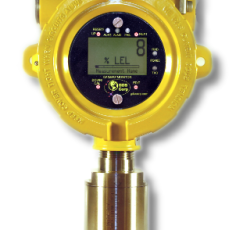Nothing is more scary than the possibility of an explosion sparked by leaking combustible gas. In the chemicals production industry and in utility environments where certain gases are produced, used as a component in the manufacturing of other liquid or gas products, or transported via pipeline, gas monitoring systems are absolutely necessary.
Even those gases that are normally considered non-hazardous, such as oxygen, can become concentrated in amounts that far exceed commercial environment safety levels. Setting up a sophisticated, custom-designed gas detection system becomes the front line of defense against the buildup of toxic substances.
At-Risk Locations For Gas Leaks
Many of the toxic, flammable gases that present a flame-up potential are produced as a by-product. This is common in waste treatment centers. Sulfuric acid, high levels of carbon dioxide, and even concentrations of pure oxygen present a danger. Workers in this type of industrial environment may not know of the buildup of toxic gases until levels reach critical density. This is why a state-of-the-art detection system that includes locally placed sensors is important.
In the petroleum industry, pipelines carrying gases that are byproducts of the refining operation have numerous junctions, shut-off valves, and high-pressure pipes. A gas leak can go undetected and can present a serious health hazard.
Chemical production facilities are constantly inspected for storage tank leaks, gasket weakening, and air quality. A network of sensors placed in areas that are adjacent to potential leak points ensures that no leak will go undetected.
Setting Up Your Gas Monitoring System
Various types of gas and flame detection systems exist, and each type includes sensor units that are calibrated to monitor the surrounding atmosphere for a particular family of gas compounds. A central monitoring system collects data from the individual sensors and alerts management personnel when gas levels are elevated.
The most common type of sensor is a dual-channel apparatus that detects the presence of gases by monitoring the electrically-induced reactions of sample air draws. If the levels rise, the sensor sends information to the monitoring station in much the same way that an automobile function sensor sends information to a control module.
Inspection of the facility is performed in order to best determine the type of sensors used and their optimum locations. The individual sensors are specially calibrated to detect only a certain type of gas, and the flame detection sensors are set to specific heat parameters and radiation frequencies.
A Safer Workplace
Most industrial environments where toxic gases are produced are required by law to have a monitoring system in place. These systems are inspected by specially trained technicians hired by the county or state where the facility is located. Gas monitoring systems not only act as a real-time protection program, they also save the client money. Insurance costs are lower, and the company may also qualify for tax breaks.
GDS Corp, a leader in the manufacturing and installation of premium-quality gas detection systems, offers customized system designs that include the use of alarm controllers, monitoring stations, specialized sensors, and calibration testing equipment.

